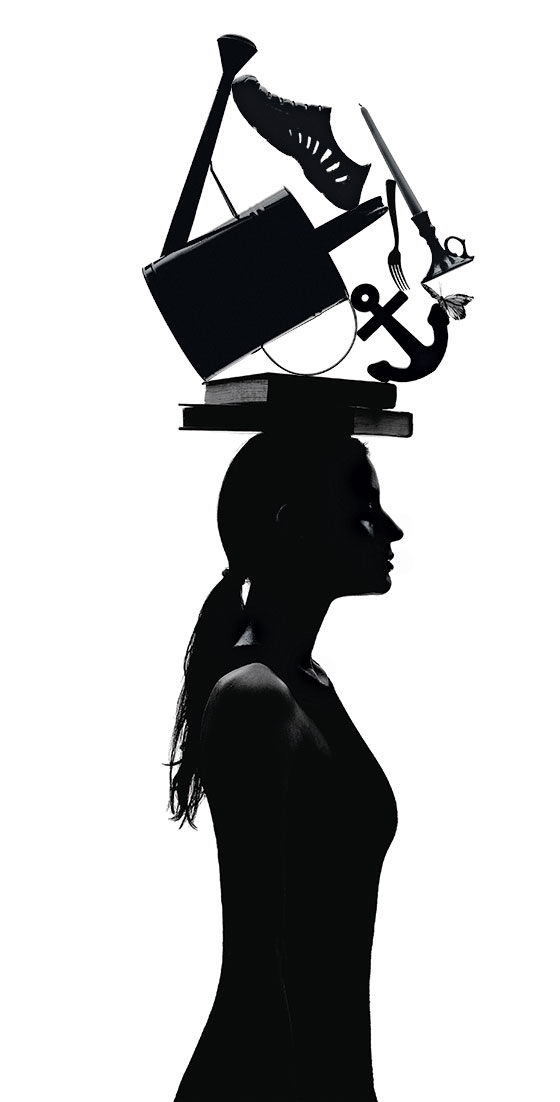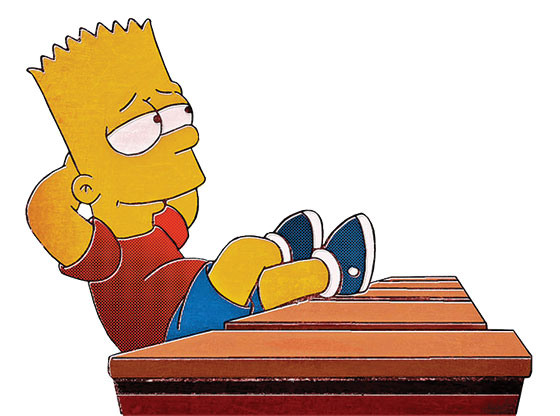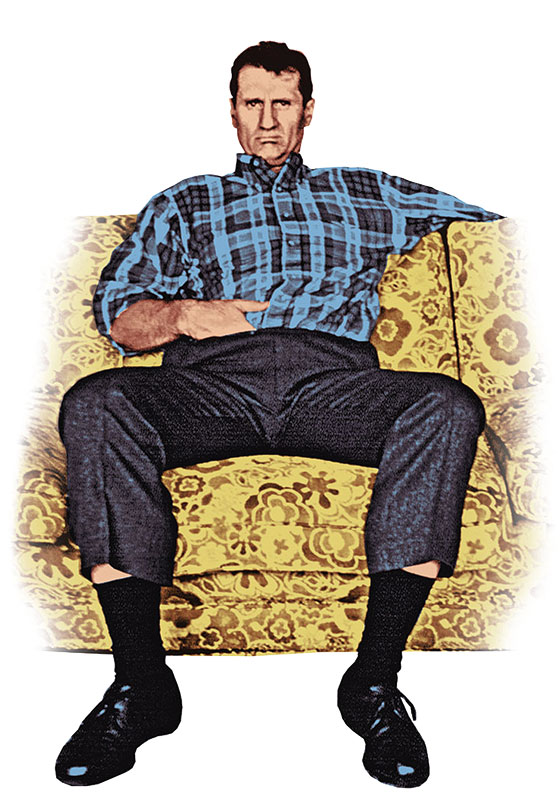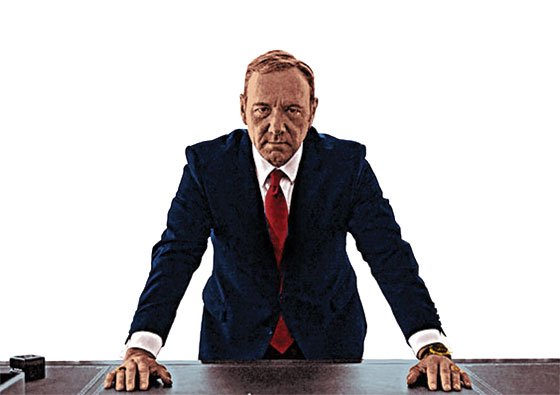 |
(Photo: Bobby Doherty/New York Magazine) |
Some 22 million of us saw the TED talk where Harvard psychologist Amy Cuddy demonstrated simple stances that, whether practiced in public or in private, are said to yield instant self-confidence and even physiological transformation. Here, a breakdown of those so-called power poses, plus a new world of (actually) buzzing gadgets and Iyengar-yoga classes to help you channel your inner Frank Underwood, or at least not shrink like a turtle in your next meeting.
Anatomy of a Power Pose
Why Rocky (and Al Bundy) had the right idea.
 |
(Photo: United Artists/Photofest; photo-illustration by Gluekit) |
The Pose: The Winner
How to Do It: Raise arms vertically so they’re high above your head, like you just won a race, and lift the chin slightly.
Why It Might Work: Psychologist Jessica Tracy’s research shows that this pose is such an innate way of showing pride that even blind athletes—who could have never seen anyone do this—raise their arms after winning a competition (losers slumped their shoulders and narrowed their chests). “That’s the best data that I’ve seen that there’s something very deep about our relationship between posture and pride,” says Jay Van Bavel, an assistant professor of psychology at NYU.
When to Deploy It: Stand this way for two minutes before dinner with toxic in-laws (or more-successful frenemies).
Watch Out For: Follow-up research by Cuddy and colleagues found that high-power poses can make you go through with evil deeds. Subjects were more likely to steal money, cheat on a test, and commit traffic violations. Still not convinced? Oscar Pistorius and Marion Jones did the finish-line pose regularly, too.
 |
(Photo: 20th Century Fox/Everett Collection; photo-illustration by Gluekit) |
The Pose: The Feet-Up Boss
How to Do It: While seated, prop your feet on a table, cross them at the ankles, and lean back. Be sure to keep your shoes on.
Why It Might Work: Cuddy’s research showed that subjects who sat in high-power poses—just for two minutes—before a rigorous interview aced it.
When to Deploy It: Before meeting the new crop of interns.
Watch Out For: Van Bavel suspects this pose might be too chill to get the internal hormone benefits Cuddy found with the more ramrod-straight ones. “To me this says, ‘I’m relaxed,’ ” Van Bavel says. “This is the position you take when you’re on your couch all day and aren’t empowered to do anything.”
 |
(Photo: ABC/Photofest; photo-illustration by Gluekit) |
The Pose: The Superhero
How to Do It: Stand with your hands balled into fists on your hips and legs hip distance apart.
Why It Might Work: According to Cuddy, “making yourself big” in a pose like Wonder Woman’s—putting your hands on your hips naturally expands the chest—for just two minutes results in changes in the brain that build courage, reduce anxiety, and inspire leadership, whether or not you’re carrying a lasso. (As for how others perceive you, another study found that baseball pitchers who stood more submissively were seen by competitors to be less competent.)
When to Deploy It: Cuddy suggests doing a pose like this in the bathroom pre–job interview, but you could also use it before a must-shine brainstorming meeting.
Watch Out For: Backfire potential. Research by psychologists Pablo Briñol, Richard Petty, and Ben Wagner suggests that power poses amplify your confidence in your thoughts, no matter if they’re positive or negative. So if you’re feeling like you have nothing to offer, standing in an extremely open and strong pose like the Superhero will only make you more sure of how bad you botched that pitch meeting. You also could be doing it wrong. “This pose will not seem powerful if you slouch in it, sink one hip, or have your legs together,” says Claire Hung, owner of Fit + Flow Yoga in East Williamsburg.
 |
(Photo: Columbia Pictures/Everett Collection; photo-illustration by Gluekit) |
The Pose: The Manspreader
How to Do It: The idea is to look like you’re pulling a subway faux pas and taking up two seats; drape one arm over the back of a chair or bench and open your legs wide enough to put a beach ball between them.
Why It Might Work: In Cuddy and UC Berkeley psychology professor Dana R. Carney’s research, it was found that subjects (both male and female) who spent two minutes in a room doing manspreading-like poses increased their testosterone levels by about 20 percent and lowered their cortisol (the hormone correlated with stress) by about 25 percent. This type of neuroendocrine profile (high testosterone, low cortisol) has been linked to leadership ability. Adds Hung: “The power in this pose comes from the space that one takes up, especially in a shared environment.”
When to Deploy It: While making your case to coach the work softball team.
Watch Out For: Occupying a bigger seat could also make you more devious—one example being that researchers looked at cars parked on New York streets and found that those with bigger driver’s seats were more likely to be parked illegally.
 |
(Photo: Paramount/Everett Collection; photo-illustration by Gluekit) |
The Pose: The Starfish
How to Do It: Open your arms and legs wide, so your body is in an X shape like the brittle sea creature’s (or if you prefer, picture yourself mid–snow angel).
Why It Might Work: In recent research, Cuddy’s been examining the differences between subjects who sleep sprawled out versus those who curl up. Early results show that people who wake up with arms and legs extended feel brighter and more optimistic than the 40 percent who wake up curled into a ball.
When to Deploy It: Post-breakup. (Hey, you have the bed to yourself.)
Watch Out For: Sleeping in the Starfish might improve your mood but be bad for your body. “It could make the hips and shoulders tight if maintained for an extended period of time,” Hung says.
 |
(Photo: Netflix/Photofest; photo-illustration by Gluekit) |
The Pose: The Politician
How to Do It: Put both hands on a flat surface in front of you and lean forward slightly. Bonus points for a cocky stare.
Why It Might Work:This posture—one beloved by politicos from Barack Obama to the fictional Frank Underwood—ups your ability to take risks. Cuddy’s research found that 86 percent of the subjects put in high-power poses, where the chest is open for two minutes, decided to gamble (only 60 percent in low-power poses did). Standing up while leaning in slightly also has a towering effect over others.
When to Deploy It: When negotiating rent.
Watch Out For: This pose may only feel powerful (or signify power) in more traditional hierarchical professions (not necessarily at, say, a start-up with an all-for-one ethos). “Some power poses might be more culturally determined,” Van Bavel says. “I don’t know if this is a power pose anywhere but lower Manhattan or D.C.”